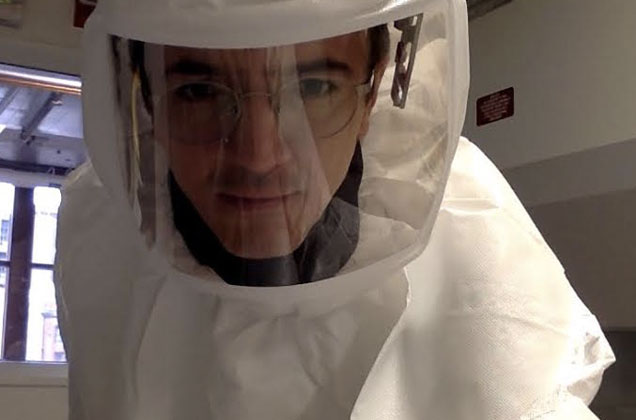22/08/2016
Faculty of Engineering and Natural Sciences member Associate Professor Murat Çokol led a joint study with Tufts University which proved that very young and very old tuberculosis microbes respond differently to antibiotics. The study was published in the world-famous Proceedings of the National Academy of Sciences journal, while another article summarizing the study was published by Nature Reviews in Microbiology.
We discussed his latest article with Murat Çokol:

Can you explain your work briefly?
The bacterium Mycobacterium tuberculosis is responsible for the onset of tuberculosis in over 10 million patients every year, and leads to the loss of 2 million lives. The standard treatment for tuberculosis includes taking various antibiotics together and lasts for a year. In this study, we observed in real time and under a microscope how mycobacteria are affected by the antibiotic Rifampicin. We used microfluids to conduct the experiment where we cultured a single mycobacterium in its natural habitat long enough for it to split 4 or 5 times, and then we exposed the bacteria to the antibiotic Rifampicin for 6 hours. Cells did not divide in the antibiotic medium. In the last stage of the experiment, we discovered that when antibiotic was withdrawn from the cell medium, some cells resumed dividing. This allowed us to conclude which cells were sensitive to Rifampicin, and which were resistant.
Did these bacteria gain antibiotic resistance?
No. Antibiotic resistance as we know it occurs through DNA mutations as a result of long antibiotic treatments and is passed on to the offspring of the bacteria for this reason. The cells that we observed spawned from a single bacterium as a result of 4 or 5 divisions and were exposed to antibiotic for only 6 hours. This does not provide for the genetic diversity that causes antibiotic resistance.
Our explanation goes like this: One peculiar aspect of mycobacteria, known since 2012, is that cell division is asymmetrical - two cells that are the result of the same division differ in size, shape and physiology. Further, smaller cells take longer to divide than larger cells. Which means that the 20 or so cells resulting from the 4 or 5 divisions in the study show considerable diversity in age, size and other parameters. An in-depth study of approximately 200 cells revealed that the youngest and oldest cells are more sensitive to the antibiotic Rifampicin.
What does this mean for tuberculosis treatment?
First of all, it explains why treatment is difficult and takes so long. Since microbes in different phases are affected by antibiotics differently, some microbe subpopulations can always avoid the antibiotic. Every mycobacterium population has to contain young, mature and old cells, and the mature cells are not sensitive to antibiotics. These can continue to divide and repopulate.
Going forward, we intend to use this information to develop rational synergistic antibiotic combinations. We will discover antibiotics that are more effective in killing mature bacteria, and combine this with Rifampicin so that the treatment is effective across all subpopulations. As an outcome, we hope to increase tuberculosis treatment effectiveness, reducing treatment duration and costs.
Your study speaks of zombie cells - what does this mean?
This is one intriguing aspect of the study; in fact, the review in Nature Reviews in Microbiology features a cartoon of a zombie-cell. Zombie cells are a phenomenon that we discovered for the first time in this study, and named accordingly. Some very old mycobacteria stop dividing when antibiotic is introduced, and do not continue to grow when antibiotic is withdrawn. In other words, they die. But these cells divide one more time, and both resulting cells are born dead. They keep dividing even though they were killed by the antibiotic, so we called them zombie cells. These and other observations allow us to develop new strategies to better understand and control tuberculosis.


